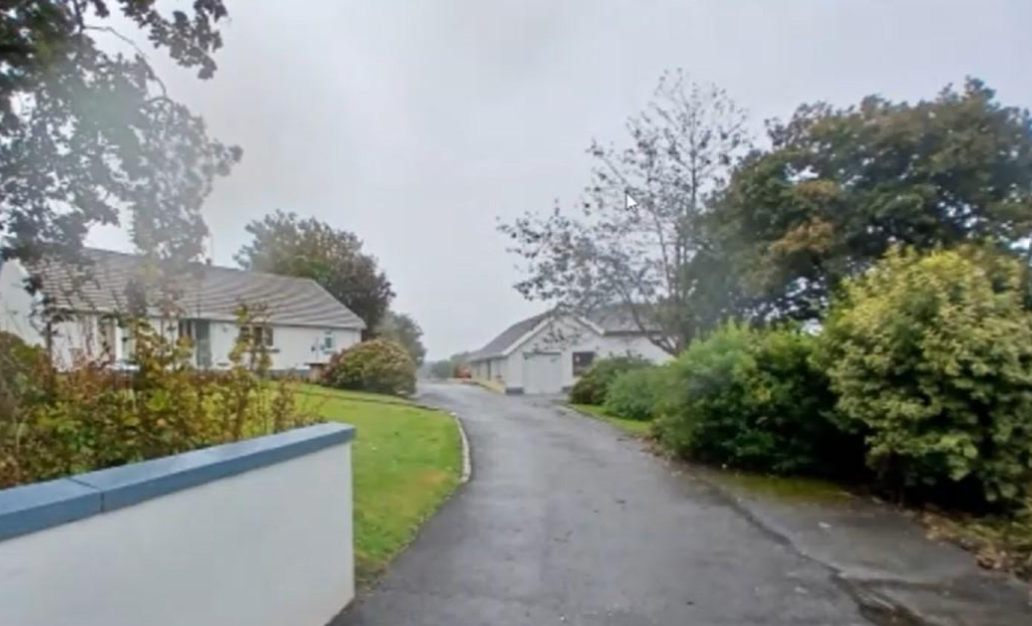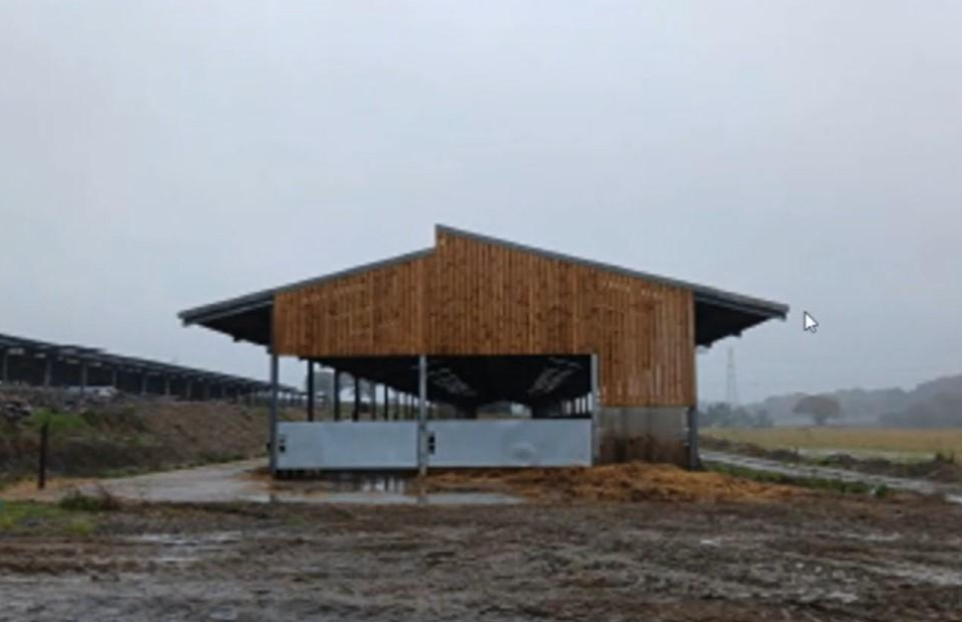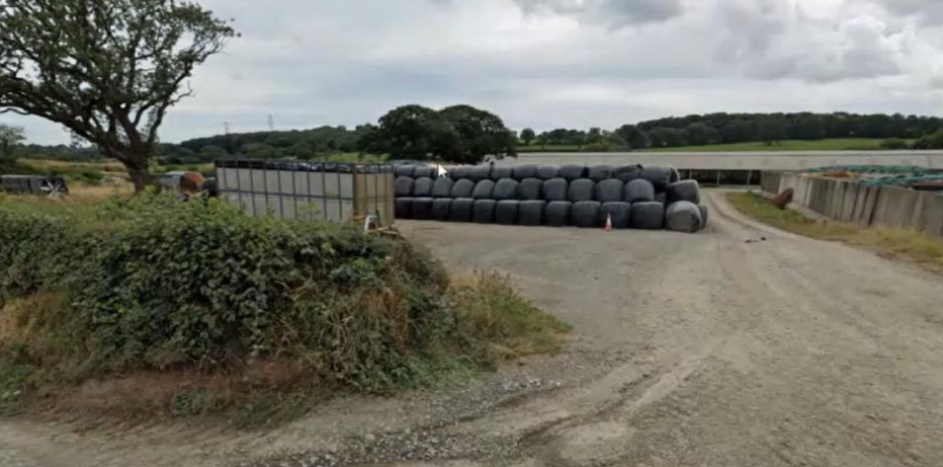Farming
Is there a way to Brexit-proof your business?

A SEMINAR organised by the Farmers’ Union of Wales has provided an opportunity for Welsh dairy farmers to come together and air their views on a recently published AHDB paper which outlines the need for ‘optimal dairy systems’ in the British dairy sector.
Leading the discussions at the Welsh Dairy Show was Gwyn Jones, AHDB dairy board chairman, who highlighted the likelihood the industry will be open to more competition, less support and increased volatility in the future. He emphasised that there will be opportunities too, since the UK was an ideal country for producing milk, due to the climate, structure and the fact that there were good farmers in the sector.
In his talk, he stressed that the way forward for the sector was to be inspirational, efficient and prepare for the future.
He discussed AHDB’s recently published approach focusing on two systems – block calving where all cows calve within a 12-week window and All year round calving with no seasonal emphasis on calving.
“Block calving herds typically have lower overall costs of production, can be simpler to operate and can have lifestyle benefits, depending on land suitability, housing and location.
“The best AYR producers can achieve production costs comparable with block-calving and higher output can bring greater income. But the system can bring complexity making it harder to spot weaknesses in performance,” said Gwyn Jones.
“In Britain, over 80% of dairy farmers identify themselves as all-year-round calvers. This raises a question as to whether this is a conscious decision based on every farmer deciding what is the best system for them, or whether the system has just evolved.”
He emphasised that all production systems could be profitable and could work well, but the important issue was to attain a balance of production from all herds across the sector, in order to meet buyer and processor requirements.
“Many processors desire a relatively flat milk production profile from their milk pool; this does not mean that all farms should have the same production profile but rather that the collective profile needs to be flat.
“This could mean a balance between spring and autumn calving herds. A joined up industry approach would offer flexibility to farmers, whilst still meeting the needs of the processors,” said Gwyn Jones.
Comparing the relevant cost of production and margins achieved from each of the systems he highlighted that according to AHDB, spring calving herds typically achieved an extra margin of 2.4 pence per litre (ppl) above year-round calvers. For autumn calvers this was 1.3ppl.
He stressed that irrespective of the chosen system, all farmers should concentrate their business analyses on the full economic cost of production, the return on capital and the profit retained.
AHDB is changing its delivery to showcase and highlight what the best performers are doing under either system and identify the KPIs that are critical to performance.
Additional strategic dairy farms are being recruited to demonstrate best practice and encourage farmer to farmer learning. Farmbench will be rolled out to the dairy sector in the New Year to help farmers understand and compare their full costs of production at both enterprise and whole-farm level.
“We are asking farmers to approach 2019 with their eyes open. The choice of system is down to individual farmers, but what is important is that they understand their current system, hold a mirror up to themselves and make a conscious decision on which system is optimal for them,” said Gwyn Jones.
Responding to the suggestion that the dairy sector should review its systems and management style in order to prepare itself for potential Brexit problems, was FUW Milk and Dairy Produce Committee Chairman Dai Miles.
“Before we change our dairy systems and increase our production, we need to have greater processing capability in Wales. The latest Welsh Government-commissioned report on processing in the Welsh dairy sector concludes that processing expansion should be ‘more of the same’ which means more low-value cheese production – that attitude is at best disappointing and not in the slightest innovative.”
Business
Cwm Deri Vineyard Martletwy holiday lets plans deferred

CALLS to convert a former vineyard restaurant in rural Pembrokeshire which had been recommended for refusal has been given a breathing space by planners.
In an application recommended for refusal at the December meeting of Pembrokeshire County Council’s planning committee, Barry Cadogan sought permission for a farm diversification and expansion of an existing holiday operation through the conversion of the redundant former Cwm Deri vineyard production base and restaurant to three holiday lets at Oaklea, Martletwy.
It was recommended for refusal on the grounds of the open countryside location being contrary to planning policy and there was no evidence submitted that the application would not increase foul flows and that nutrient neutrality in the Pembrokeshire Marine SAC would be achieved within this catchment.
An officer report said that, while the scheme was suggested as a form of farm diversification, no detail had been provided in the form of a business case.
Speaking at the meeting, agent Andrew Vaughan-Harries of Hayston Developments & Planning Ltd, after the committee had enjoyed a seasonal break for mince pies, said of the recommendation for refusal: “I’m a bit grumpy over this one; the client has done everything right, he has talked with the authority and it’s not in retrospect but has had a negative report from your officers.”

He said the former Cwm Deri vineyard had been a very successful business, with a shop and a restaurant catering for ‘100 covers’ before it closed two three years ago when the original owner relocated to Carmarthenshire.
He said Mr Cadogan then bought the site, farming over 36 acres and running a small campsite of 20 spaces, but didn’t wish to run a café or a wine shop; arguing the “beautiful kitchen” and facilities would easily convert to holiday let use.
He said a “common sense approach” showed a septic tank that could cope with a restaurant of “100 covers” could cope with three holiday lets, describing the nitrates issue as “a red herring”.
He suggested a deferral for further information to be provided by the applicant, adding: “This is a big, missed opportunity if we just kick this out today, there’s a building sitting there not creating any jobs.”
On the ‘open countryside’ argument, he said that while many viewed Martletwy as “a little bit in the sticks” there was already permission for the campsite, and the restaurant, and the Bluestone holiday park and the Wild Lakes water park were roughly a mile or so away.
He said converting the former restaurant would “be an asset to bring it over to tourism,” adding: “We don’t all want to stay in Tenby or the Ty Hotel in Milford Haven.”
While Cllr Nick Neuman felt the nutrients issue could be overcome, Cllr Michael Williams warned the application was “clearly outside policy,” recommending it be refused.
A counter-proposal, by Cllr Tony Wilcox, called for a site visit before any decision was made, the application returning to a future committee; members voting seven to three in favour of that.
Farming
Farmers Union of Wales Warns: Labour’s 5G Expansion Risks Rural Blackspots

FUW Joins Landowners in Urgent Call to Pause Controversial Telecoms Reforms
THE FUW (Farmers’ Union of Wales) has warned that rural communities face worsening mobile blackspots and farmers risk losing essential income if the Labour Government expands a telecoms policy blamed for stalling Britain’s 5G rollout.
In a letter to Digital Economy Minister Liz Lloyd, the FUW aligns with landowners, investors, and property experts demanding a halt to Part 2 of the Product Security and Telecommunications Infrastructure (PSTI) Act 2022. Extending the 2017 Electronic Communications Code (ECC) would “entrench failure,” the group argues, sparking more stalled renewals, site losses, and legal battles just as Wales needs swifter rural connectivity.
The 2017 reforms empowered operators to cut mast rents—often by 90%—from hosts like farmers, councils, and NHS trusts. Far from boosting rollout, they’ve ignited over 1,000 tribunal cases since 2017, versus 33 in the prior three decades. Rural goodwill has eroded, with hosts now eyeing exits.
“Every lost mast isolates households, schools, and businesses,” the FUW states. “No public subsidy can fix this systemic damage.”
A survey of 559 hosts (via NFU, CLA, BPF) shows:
- 35% considering full withdrawal.
- 70% of expired lease holders facing operator legal threats.
Landowner Ted Hobbs in New Tredegar shares the pain: “My 1995 Vodafone lease was £3,500 yearly, renewed in 2010 at the same rate. It expired May 2025—now they demand a slash, backed by the Code. This is confiscation, not partnership.”
Labour’s push forward—despite earlier opposition and a critical consultation—ignores these red flags.
FUW President Ian Rickman adds: “Farmers hosted masts in good faith for rural connectivity. Punishing them with rent cuts sabotages Wales. Halt this now, restore trust, and incentivise real progress.”
The coalition urges ministers to reopen dialogue before deepening rural divides. Wales can’t afford more policy missteps.
Business
Large new development at one of Pembrokeshire’s biggest dairy farms approved

PLANS for a heifer accommodation building and associated works at one of Pembrokeshire’s largest dairy farms, with a milking herd of 2,000 cows, have been given the go-ahead.
In an application recommended for approval at the December 2 meeting of Pembrokeshire County Council’s planning committee, Hugh James of Langdon Mill Farms Ltd sought permission for a 160-metre-long heifer accommodation building, a slurry separation/dewatering building and associated yard areas at 1,215-hectare Langdon Mill Farm, near Jeffreyston, Kilgetty.
A supporting statement through agent Reading Agricultural Consultants said: “The holding currently has a milking herd of approximately 2,000 cows, which are housed indoors for the majority of the year, with dry cows and heifers grazed outdoors when weather and soil conditions permit.
“There has been significant investment in buildings and infrastructure at the farm over the last decade in respect of cattle accommodation, slurry storage, milking facilities, Anaerobic Digestion (AD) plant, feed storage. Recently a calf and weaned calf accommodation buildings were approved by Pembrokeshire County Council with construction almost complete.
“The unit is efficient, achieving yields of more than 10,000 litres/cow/year, with cows being milked three times/day in the 60-point rotary parlour. Langdon Mill Farm currently directly employs 21 full-time, and three part-time staff. Of these, four live on site in the two dwellings opposite the farm, with the remaining staff living in the locality.”

It added: “Although the unit has previously purchased heifers to aid expansion, the farm now breeds most of its own replacements to improve genetics and to minimise the ongoing threat of bovine tuberculosis (bTB).
“Following the completion of the calf and weaned calf accommodation buildings, the farm will be rearing all of the cattle under seven months at Langdon Mill Farm, before being transported off site to be reared at three farms in the local area. At 22-months the in-calf heifers are brought back to the maternity building to calve and then are introduced into the milking herd.”
It said the proposed building would be used by heifers between the ages of 7-22 months, the siting “directly influenced by the adjacent calf and weaned calf buildings, with livestock being moved from one building to the next as they get older”.
Approval was moved by Cllr Brian Hall, seconded by Cllr Danny Young, with Cllr John T Davies also stating his support.
“It’s common sense; the fact we approved a calf-rearing shed, it follows on you need a heifer rearing shed,” he said.
Cllr Davies later said the scheme would also support biodiversity, and, with a decline in milk prices, supporting the large-scale farm was about “safety in numbers”.
Chair Cllr Mark Carter said it was “a pleasure to be supporting the farming industry”.
Members unanimously supported the recommendation of approval.
-

 Crime6 days ago
Crime6 days agoMan denies causing baby’s injuries as police interviews read to jury
-

 Crime1 day ago
Crime1 day agoDefendant denies using Sudocrem-covered finger to assault two-month-old baby
-

 Crime7 days ago
Crime7 days agoMan denies injuring baby as jury hears police interview in ongoing abuse trial
-

 Crime16 hours ago
Crime16 hours agoPembroke rape investigation dropped – one suspect now facing deportation
-

 News16 hours ago
News16 hours agoBaby C trial: Mother breaks down in tears in the witness box
-

 Crime2 days ago
Crime2 days agoDefendant denies causing injuries to two-month-old baby
-

 Crime7 days ago
Crime7 days agoMilford Haven man jailed after online paedophile sting
-

 Crime1 day ago
Crime1 day agoLifeboat crew member forced to stand down after being assaulted at Milford pub





















